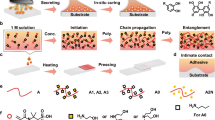Abstract
MANY different forms of PVC powders are manufactured, the variety of the polymers depending on the initial constituents in the reaction mixture. Suspension homopolymers and paste (emulsion or microsuspension) polymers form 91% of the total PVC produced in the US. The latter products range in particle diameter from 0.5 to 30 µm and generally have ionic detergents added during their manufacture, whereas suspension homopolymers have no ionic detergent and are of larger particle diameter (60–180 µm). A preliminary investigation1 had shown that some forms of PVC particles produced haemolysis in vitro and it was suggested that this effect was due to some residual component of the preparation (not vinyl chloride monomer) located on the surface of the particle. The following data support these findings and suggest that the surface-active factor is ionic detergent, used in the manufacture of the paste polymers.
This is a preview of subscription content, access via your institution
Access options
Subscribe to this journal
Receive 51 print issues and online access
$199.00 per year
only $3.90 per issue
Buy this article
- Purchase on Springer Link
- Instant access to full article PDF
Prices may be subject to local taxes which are calculated during checkout
Similar content being viewed by others
References
Richards, R. J., Desai, R., Hext, P. M., and Rose, F. A., Nature, 256, 664–665 (1975).
Author information
Authors and Affiliations
Rights and permissions
About this article
Cite this article
RICHARDS, R., DESAI, R. & ROSE, F. A surface-active agent involved in PVC-induced haemolysis. Nature 260, 53–54 (1976). https://doi.org/10.1038/260053a0
Received:
Accepted:
Issue Date:
DOI: https://doi.org/10.1038/260053a0
This article is cited by
-
Lineages to circuits: the developmental and evolutionary architecture of information channels into the central complex
Journal of Comparative Physiology A (2023)
-
Biochemical and cellular reaction of PVC paste polymers and latex following intratracheal instillation into rats
Inflammation (1981)
Comments
By submitting a comment you agree to abide by our Terms and Community Guidelines. If you find something abusive or that does not comply with our terms or guidelines please flag it as inappropriate.



